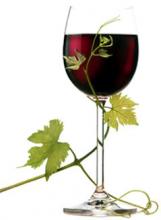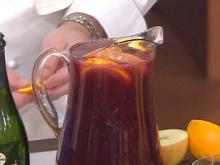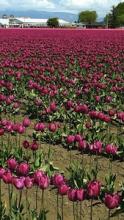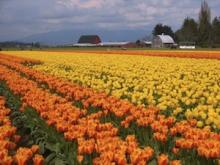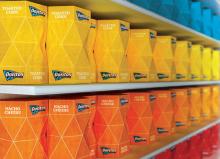Zefina, like Alder Ridge, Six Prong, and Sawtooth, was once owned by Corus Estates and Vineyards, a small company making wines in Washington, Oregon and Idaho.
Corus has close ties to the early history of Washington winemaking, when Associated Vinters was started by a group of Washington university professors interested in growing traditional European grapes. Associated Vintners became Columbia Winery in the 1980s, and in the 1990s, began acquiring other wineries, including Idaho's Ste. Chapelle, Pintler (renamed Sawtooth) and Covey Run (Columbia Winery, Covey Run and Ste. Chapelle were later sold to Constellation). Associated Vintners created a company called Corus to oversee these wineries, and, as Corus, created a large new vineyard in the eastern Columbia Gorge called Alder Ridge. Grapes from Alder Ridge were used in new labels, among them Zefina. In 2004, Robert J. Chowanietz was appointed head winemaker for three of Corus's labels—Zefina, Alder Ridge, and Six Prong.
In January of 2010, Precept Wine Brands acquired Corus Estates & Vineyards. Corus Estates and vineyards had been owned and managed by the Baty family; Dan Baty is one of the co-owners of Precept Wine Brands. As part of the acquisition deal, the Baty family retained separate ownership and operations for their vineyard company, Winemakers LLC. Precept Wine Brands in turn will continue sourcing grapes from Winemakers LLC's vineyards for their wine.
Zefina specialized in "hand-crafted" wines of the Rhone and Mediterranian sorts, made with Alder Ridge-grown grapes. More specifically, a rhone-style white wine blende made of Vigoneir and Roussanne, and a red blend made with Grenache, Syrah, Mourvedre, Counoise, and Cinsault. They also produced and bottled Sagiovese, Zinfandel, and Tempranillo. The first release was in 2001 to some acclaim. Not all wines were produced and released in every year. With the shift in ownership, Six Prong and Zefina wines are appearing in Washington state liquor stores, Trader Joe's and the Bargain Grocery Outlet, at strikingly reduced prices.
Zefina's 2004 Serience red is very much a Rhône style red blend. It was well-received by the wine community in that it in 2008 received a Gold Medal at the North West Wine Summit, an award from Seattle Wine Awards for "Outstanding Rhone Style Blend," and a Silver Medal from the Washington State Wine Competition as well as a bronze from the San Diego International Wine Competition. Wine Enthusiast awarded Zefina's 2004 Serience Red 88 points. It's a rich, robust blend, and while it's quite enjoyable, it's not a wine I'll be buying by the case. Zafina's 2006 Serience White, however, is a different bottle of wine; we went back to pick up all we could.
Zefina's 2006 Serience White is also a Rhône style blend, one made using the traditional combination of Viognier and Roussanne. The blend is 60% Viognier and 40% Roussanne. It's quite fabulous; 14.1% ABVjust sweet enough, and just dry enough to be thoroughly enjoyable with goat cheese and salmon salad, or crab-stuffed avocados, or even pear and spinach salad with goat cheese and toasted walnuts. I note that this wine took a Bronze Medal at the 2008 North West Wine Summit as well as at the 2008 Washington State Wine Competition and a silver at the 2008 Long Beach Grand Cru Wine Competition. At $3.99 a bottle, we went back for more; it's going to be a long summer.
